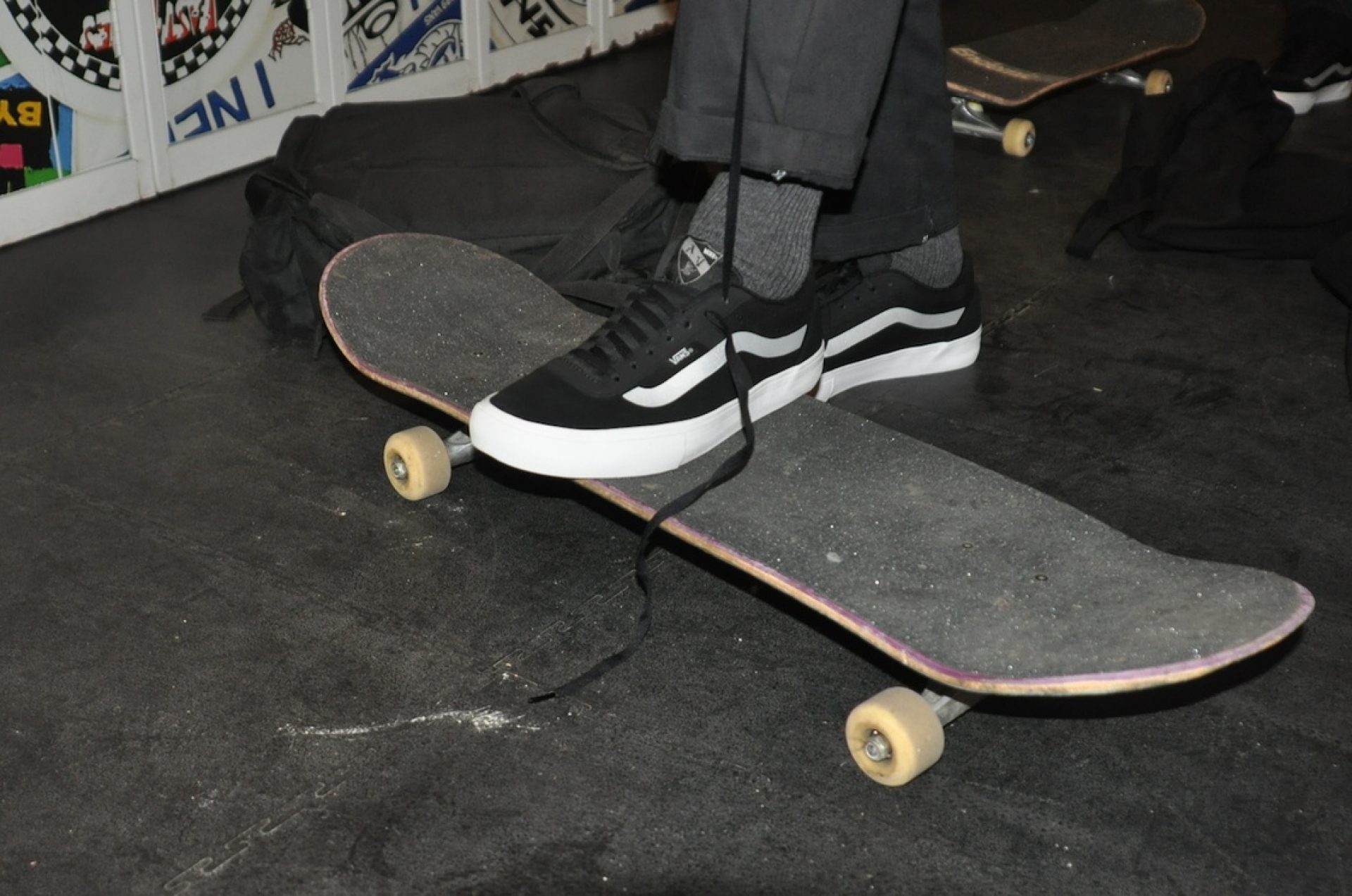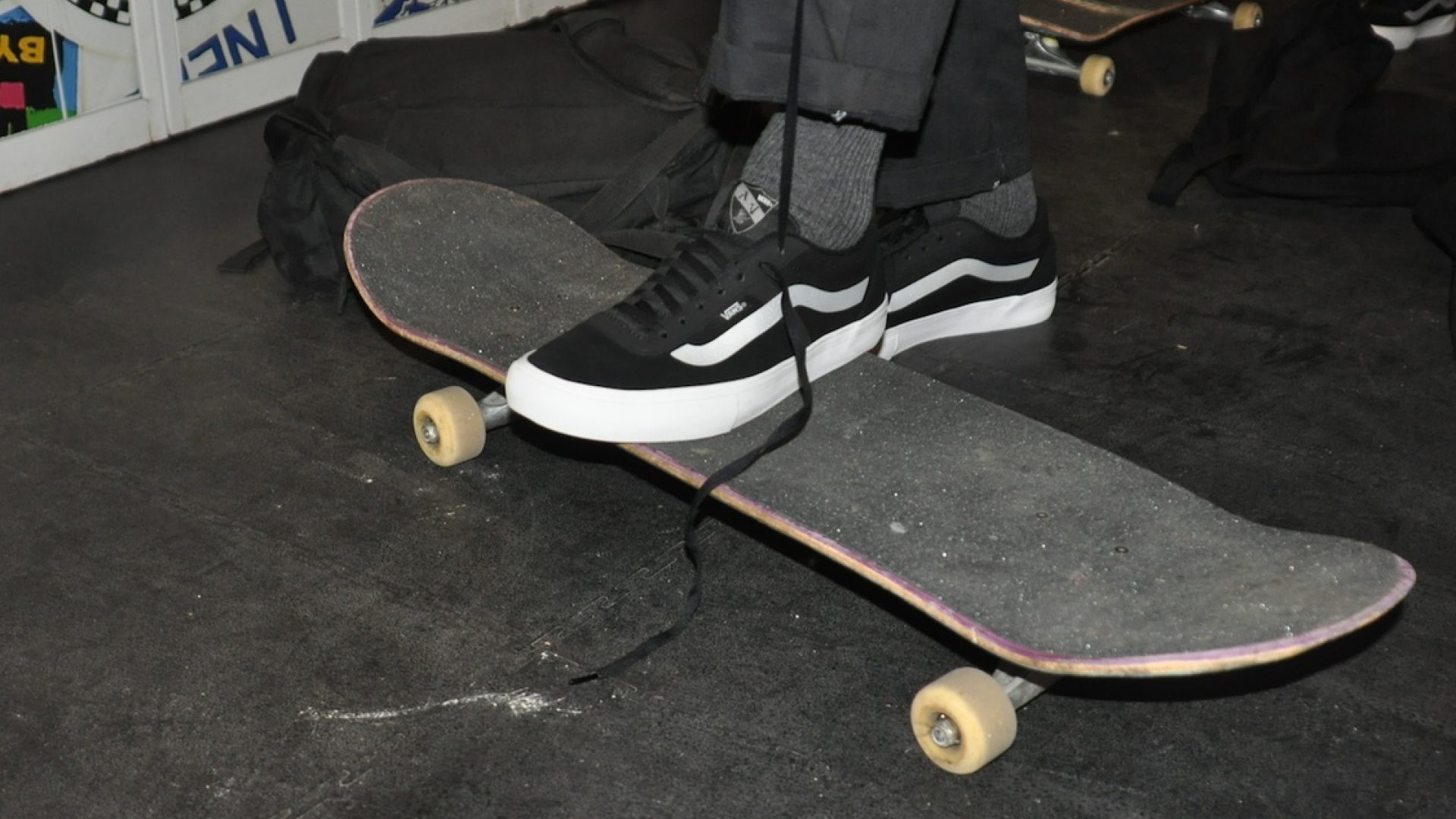
Vans Revenues Up 35% & DTC Up 60% In 2019 Q1
Vans reports 35% revenue growth, 60% DTC digital growth in Q1 of 2019
Wait, isn’t it early in the year for VF Corporation to be reporting first quarter 2019 results? Not keeping in mind that the first three months of the year were labelled as a ‘transition period’.
From now on, VFC – home of Vans, outdoor brand The North Face and workwear mainstays Dickies – will end financial years on the last Saturday in March, instead of the one closest to December 31.
But let’s get to the analysis.

Vans AV Pro – Photo Harry Mitchell Thompson
In a nutshell: The growth strategy is working and core brands such as Vans are firing on all cylinders. The iconic skateboard footwear brand reported a 35% revenue increase (32% in constant dollars) in the period ended June 30, 2018.
With Vans continuing its winning run, the VF Corporation reported that revenue from continuing operations increased 23% (up 21% currency neutral) to $2.8 billion in the first quarter. International sales are up 14%, while adjusted gross margin reached 50.5% during the quarter.
In the bigger picture, these results are directly related to a growth strategy focused on best-performing brands – VFC also recently sold Nautica and its Licensed Sports Group for that reason – with an increased push into DTC and omni-channel retail.
“VF’s first quarter results were strong, driven by continued broad based acceleration across our core brands and platforms,” said Steve Rendle, Chairman and Chief Executive Officer, adding: “Our growth was balanced across geographic regions and channels, as consumers globally remain resilient despite increased geopolitical uncertainty. The year and half into our 2021 plan, I’m pleased with the progress that we’ve made.”
Spotlight on VANS
Vans is continuing to emerge as a showcase for a successful brand in today’s omni-channel retail environment. The brand with the Waffle Sole grew its direct-to-consumer (DTC) revenue by 37% during the quarter, including a whopping 60% increase in DTC digital revenue.
At the same time, wholesale increased by 34% globally. Viewed by market region, Vans achieved 39% revenue growth in the U.S., 17% in Non-U.S.-Americas, 33% in EMEA and 34% in APAC.
Looking at Europe, Vans reported 21% growth in DTC and 40% in wholesale, driven by digital partners and key strategic accounts in the region. Strong performing products include progression footwear such as the Ultra range, as well as icons like Checkerboard, slip-ons and authentic, as well as apparel.
In the Americas, Vans grew DTC revenues by 40%, with DTC digital up 70%. The Vans Family loyalty program now counts over 2 million members since launching in March, while sales of slip-on and authentic styles are accelerating. In APAC, Vans is gaining traction with 30% increase in China and Korea.
“The global momentum in our Vans business remains strong and growth is well diversified with double-digit growth in all regions, channels and product families,” said CFO Scott A. Roe in the earnings call.
In terms of its product selection, the classic brand started in 1966 walks the line between tradition and newly offerings. Actually, more than 75% of the brand’s sales now come from franchises and categories other than classic Old Skool footwear. At the same time, classic footwear grew its footprint by 40% during the quarter.
On the strength of these numbers, the entire Vans brand is now expected to increase revenue by at least 15% in fiscal 2019.
“The Vans brand is clearly outperforming the long-term growth targets we laid out at our Investor Day in Boston, little more than a year-ago. We look forward to updating you in Vans vision for its next chapter growth at the brand’s upcoming Investor Day in September,” said CEO Steve Rendle in the earnings call.
Reshuffling the divisions
The new fiscal year structure is not the only sea change at VFC. The former division structure, where VANS used to side next to The North Face in the Outdoor & Action Sports coalition, has also been reshuffled.
Vans now kicks it in the Active segment, which increased revenue by 25% (up 22 % in constant dollars) during the quarter. Meanwhile, The North Face brand has set up camp in VF’s Outdoor segment that reported a revenue increase of 6% (3% in constant dollars) in Q1/19. The Work segment is home to Dickies, Red Kap and others, while Jeans is the domain of Wrangler and Lee brands.
Overall, these reporting changes are part of VFC’s 2021 Global Business Strategy that rests on the following four pillars:
- Reshape the portfolio
- Transform model
- Distort Asia
- Elevate DTC, prioritize digital
The Big Three brands in VFC’s portfolio – Vans, Timberland, and The North Face – achieved 21% sales growth in Q1.
Outlook
Looking at the rest of the year, VF CEO Steve Rendle said: “We are executing well against our 2021 growth plan and continuing on our journey to reshape the portfolio and transform VF into a purpose-led, performance-driven, consumer-centric organization focused on and committed to delivering superior returns to shareholders.”
This optimism is reflected in full-year projections as well. For the VF Corp’s entire operation, full year fiscal 2019 revenue is expected to be in the range of $13.6 billion reflecting year-on-year growth of approximately 10–11%.
Earnings per share are expected to be in the range of $3.52 to $3.57, an increase of 12–14%.
And for an impressive final outlook, Direct-to-consumer revenue is now expected to increase between 11–13% percent, up from previous expectations around 8–10%. VF Corporation’s digital revenue is now expected to increase more than 30% over the course of this year, as VF’s evolution continues.
Quotes taken from VF’s official press release with supplemental quotes from the earnings call transcript on Seeking Alpha.




